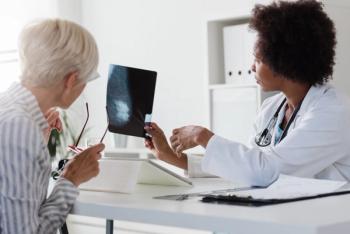- July 2025 Influenza Guide for Pharmacists
Flu Fighters: Pharmacists Partnering to Protect Communities
Key Takeaways
- Community pharmacists can significantly influence influenza vaccination uptake by engaging with local organizations and understanding community needs.
- Building trust and relationships with community partners is essential for effective vaccine advocacy and outreach.
Collaborating with local organizations strengthens trust and can influence vaccination uptake.
Community pharmacists are among the most accessible and trusted health care professionals. Their medication expertise and close relationships with patients make them uniquely positioned to promote public health initiatives such as influenza vaccination. Yet their potential as vaccine advocates often remains untapped.
By collaborating with local organizations, pharmacists can deepen community engagement and significantly influence influenza vaccination uptake. The following are suggestions for pharmacists looking to utilize community connections to fight influenza.
Meet Communities Where They Are
Although influenza vaccines are widely available, vaccination rates remain below national goals. During the 2023-2024 influenza season, only 44.9% of US adults received a vaccine, far short of the Healthy People 2030 target of 70%.1,2 Barriers such as misinformation, hesitancy, limited access, and lack of awareness persist.
Pharmacists can address these challenges, but to do so effectively, they must step outside the pharmacy and meet people where they are. Being visible in the community enhances trust, reduces barriers, and allows for tailored, culturally competent messaging.
Understand Local Needs
Effective outreach starts with understanding the community. Pharmacists can use tools such as the CDC’s FluVaxView to identify local influenza vaccine trends and underserved populations.3
Potential community partners include schools and parent-teacher organizations, faith-based communities, senior centers and assisted living facilities, local health departments and nonprofit organizations, employers and labor unions, and youth programs and sports leagues. These groups often hold deep trust within their communities, which pharmacists can leverage to expand their reach and credibility.
Build Relationships Through Shared Goals
Trust and relationship building are foundational. Pharmacists can start by attending neighborhood meetings, volunteering, or simply introducing themselves to community leaders. These conversations help uncover shared goals.
For example, a church may focus on protecting older adult members during the winter, or an employer may be concerned about reducing the number of employee sick days. By framing vaccination as a way to support these priorities, pharmacists can offer mutually beneficial partnerships.
Offer Education and Access
Once trust is established, pharmacists can provide value through accessible services and relevant education. Examples include the following:
• Mobile vaccine clinics at churches, schools, or workplaces
• Health talks to address vaccine myths and answer questions
• Multilingual influenza education materials through local nonprofit organizations
• Information booths at health fairs, festivals, or back-to-school nights
Public trust in pharmacists and their ability to give evidence-based, compassionate vaccine counseling in familiar settings can shift public perception and encourage uptake.4
Make Flu Vaccination Visible and Convenient
Visibility and convenience matter. Pharmacists should work with community partners to promote their efforts through co-branded social media posts; flyers at grocery stores, libraries, and schools; local newsletters, church bulletins, or radio segments; and branded badges or clothing at outreach events.
They should also offer flexible scheduling with walk-ins, after-hours clinics, and weekend availability to help busy families access care. Partnering with rideshare companies or local volunteers for transportation support can also remove common barriers.
Measure Impact and Celebrate Success
To sustain momentum, pharmacists should track the outcomes of their community initiatives. Sign-in sheets, simple feedback forms, and vaccination counts help assess impact and improve future events.
Sharing success stories is equally important. Publicly recognizing volunteers, thanking partners, and celebrating increases in influenza vaccination build goodwill and inspire continued collaboration.
About the Author
Michael Fleck, PharmD, is a PGY-1 community-based pharmacy resident at ACME Sav-on Pharmacy.
A Call to Action
Community pharmacists are critical players in influenza prevention, but their greatest impact occurs when they collaborate with the communities they serve. By identifying local needs, building trusted partnerships, providing accessible education and services, and staying visible, pharmacists can make a real difference in vaccine uptake.
These efforts not only improve public health but also reinforce the vital role of pharmacists on the front lines of community health care. As trusted professionals, pharmacists can help protect more people from influenza—one partnership, one conversation, and one vaccine at a time.
REFERENCES
Increase the proportion of people who get the flu vaccine every year – IID-09. Healthy People 2030. Accessed June 10, 2025. https://odphp.health.gov/healthypeople/objectives-and-data/browse-objectives/vaccination/increase-proportion-people-who-get-flu-vaccine-everyyear-iid-09
Flu vaccination coverage, United States, 2023-24 influenza season. CDC. September 20, 2024. Accessed June 10, 2025. https://www.cdc.gov/fluvaxview/coverage-byseason/2023-2024.html
FluVaxView. CDC. Accessed June 10, 2025. https://www.cdc.gov/fluvaxview/index.html
Brenan M. Nurses retain top ethics rating in U.S., but below 2020 high. Gallup. January 10, 2023. Accessed June 10, 2025. https://news.gallup.com/poll/467804/nurses-retaintop-ethics-rating-doctors-slump.aspx
Articles in this issue
5 months ago
Pharmacists Can Simplify the Vaccine Schedule6 months ago
Flu Vaccines Are a GoNewsletter
Stay informed on drug updates, treatment guidelines, and pharmacy practice trends—subscribe to Pharmacy Times for weekly clinical insights.





